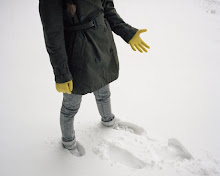
I nots so recently attempted to go see Michael Samuels' work at the Rokeby Gallery - a small basement venue near Farringdon. Sadly the door was locked - I think i may have hit the tiny space's lunch hour, so I was only able to scrunch my nose up against the window pane. His exhibition entitled "Clusterfuck" contained his most recent work manipulating space, light and everyday objects to create a disorientating environment and viewing experience.

Samuels continues to utilize Formica furniture from the 60’s and 70’s, which is sourced for its distinctive qualities and appearance. Elements such as tabletops, chair legs and drawers are liberated from their traditional role, cut up and reconfigured into structures that no longer have a utilitarian purpose. Through their displacement any functional reading of the elements is disrupted. The structures are often punctured with coloured Perspex or they emanate light, which further extends the physical presence they hold. The coloured rays penetrate the viewers space, offering a playful presence whilst questioning materiality and form; in dislocating and rupturing everyday objects and introducing light elements Samuels heightens the tension between the functional aspect of the object and its immaterial value.

His industrial brightness was appropriate for the stark and somewhat seedy setting. Clearly taking a leaf from Mondrian, his sculptural forms embodied various transitions from past to present, both through history and through use of found dated objects adorned with neon and plastic - A certain comfort was found in their synthetic glow. These window like structures continue to question the viewers perception of depth, presence and absence.
Looking through his old work on his website, miniature scenes (such as an island rock, teepee or lamppost) positioned on everyday objects (such as chairs or tables) equally appealed to me. I had problems finding images up for grabs online, so check out his website.














